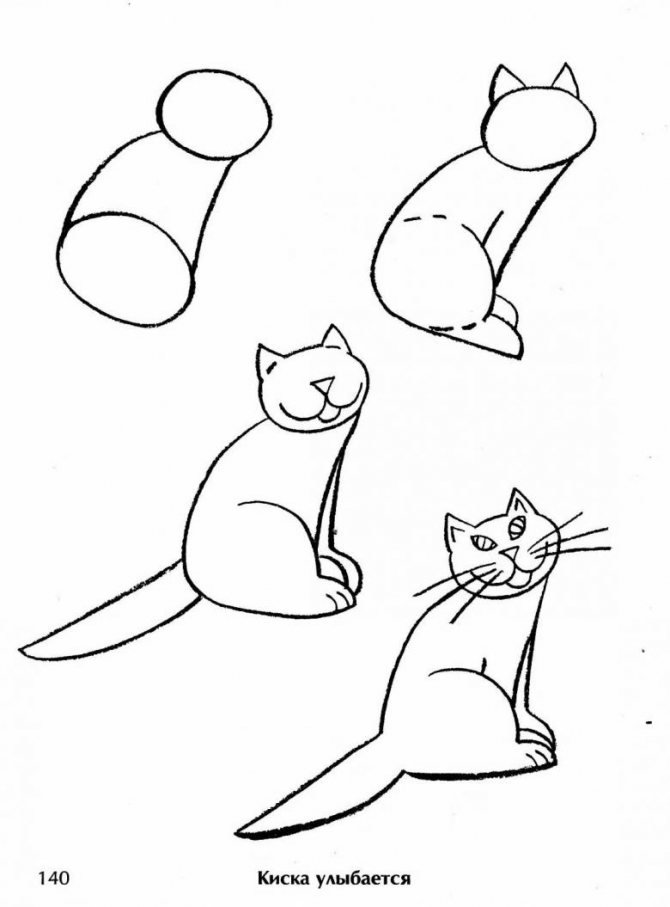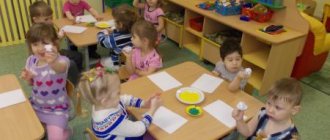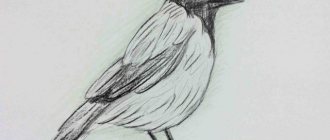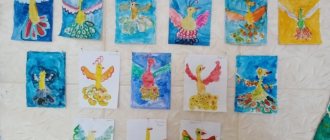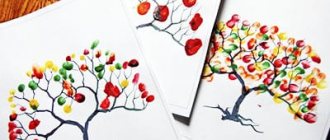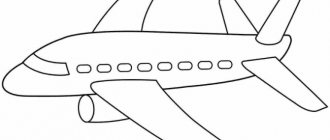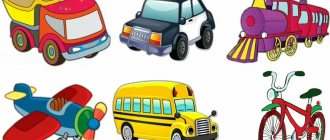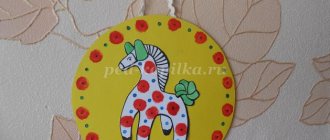Drawing of a cat in dynamics
Now let's make it more difficult. Try drawing a cat with a movement effect.
- Mark the general location of the cat with an oval on a piece of paper. Draw the head with a circle and the body with an oval. Use a horizontal line to mark the area on which the animal stands. Draw paws using strokes.
- Look in specialized literature to see what parts the cat's skeleton consists of. You will need this in order to show the cat in dynamics. Use dots to indicate the key proportions of the body. For example, the shoulder blade, hip and elbow. This will maintain the proportions of the animal's body.
- Outline the outline of the figure that characterizes the shape of our object (outline).
- Cover the drawing locally with black strokes. Mark the fur along the outline, using the technique of darker shading. This will help give the drawing a three-dimensional effect.
Let's draw a cat that sits with its head turned to one side.
We recommend starting this task by studying the step-by-step diagram.
- First draw a small circle that will symbolize the head. Draw a larger circle next to it. This will be the body of the cat.
- Inside both circles, draw auxiliary lines, and also mark the ears and tail.
- On the cat's face, draw eyes, a nose, a mouth and a mustache.
- Smoothly round the ears in the drawing, and make the outline of the head wavy. This technique will help to depict the wool from a more voluminous perspective.
- Using auxiliary lines, draw the back of the animal, as well as the front left paw and neck.
- Draw the tail. Erase the auxiliary lines.
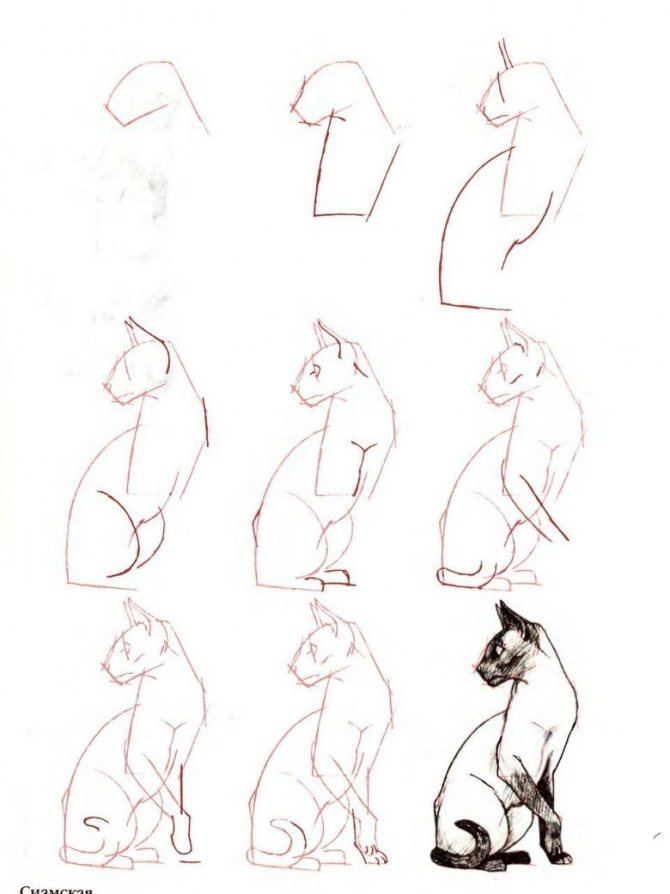
Dear friends, in today's drawing lesson we learned how to draw a cat. Using a variety of techniques, you practiced creating pictures of animals from a variety of angles. We started our excursion into the world of artists with simple elements.

Using basic geometric shapes, our young artists learned to draw a cat sleeping peacefully on the sofa. After mastering basic drawing skills, we depicted a cat that woke up and was sitting by a bowl of milk.
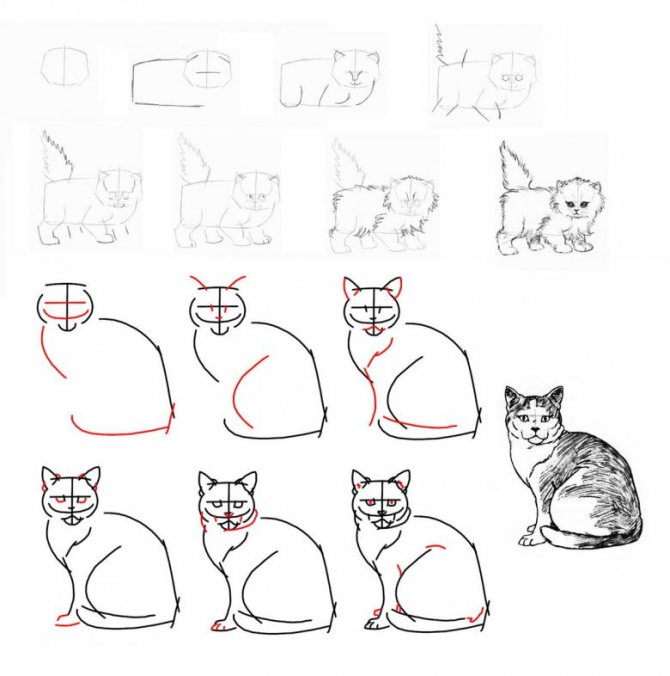
After that we watched the cat hunt for mice. Our little artists immediately came up with the idea of drawing a cat in motion. Following a simple algorithm, they successfully completed the task.
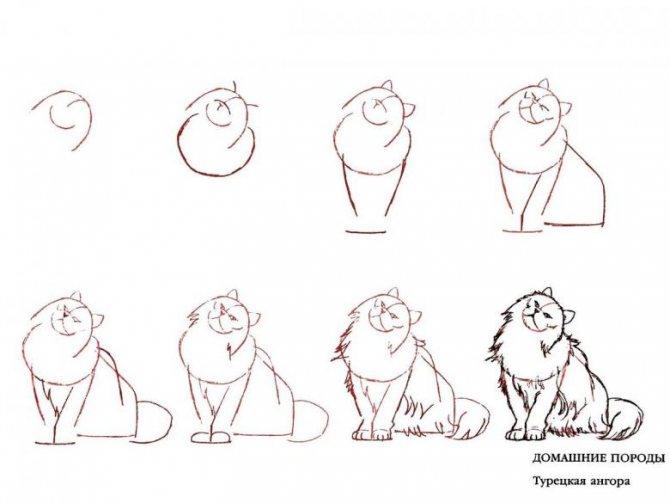
The final task for our lesson today was to draw a cat sitting with its head turned to one side. Using all the accumulated knowledge, the novice artists depicted the cat in this position.
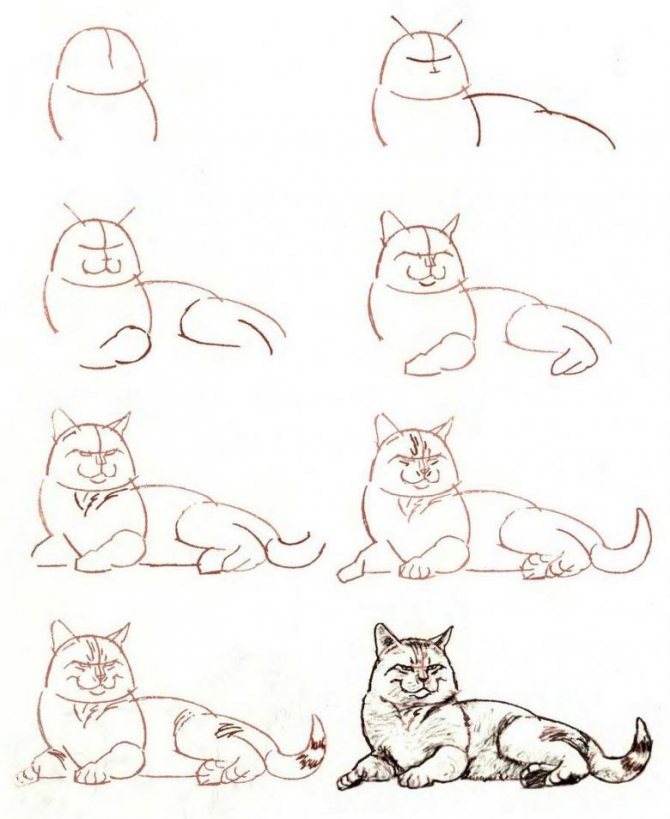
With this, our lesson for today can be considered completed. We are sure that children and their parents received a lot of new impressions for future discoveries. See you again, friends!
Pictures of cats for sketching
Here you can download templates of cats, kittens and kitties and use them for sketching (click on the picture - it will enlarge and download):
Drawing “Fluffy kitten” in the middle group (poke with a hard semi-dry brush, paints)
Nadezhda Lichman
Drawing “Fluffy kitten” in the middle group (poke with a hard semi-dry brush, paints)
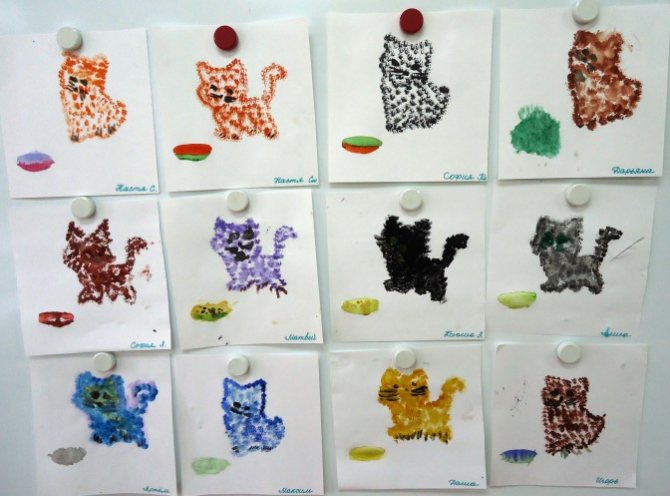
Who in childhood does not dream of a funny cute kitten? With his appearance, life changes, it becomes interesting and fun.
The topic of the project “Domestic Animals and Their Cubs” has ended. I decided to draw a kitten with the children using a hard semi-dry brush and watercolor paints.
Set tasks:
- develop the ability to convey the features of the depicted object;
— improve painting with a hard brush and a brush with soft bristles;
- choose the desired color yourself;
- develop children's creative abilities, imagination, aesthetics;
- cultivate a sustainable interest in visual arts.
The children have pieces of paper on their tables with the outline of a kitten drawn on them.
MOTIVATION.
- Guys, I want to tell you a riddle, listen carefully:
He laps up milk and loves to jump high.
Striped little imp, this is just our... (kitten).
That's right, this is a kitten, the kitten is affectionate, playful and a very beautiful animal.
He loves his home, his owners. Which of you have kittens, kitties, seals? (Children's answers). Your pets are probably bored without you at home. What can we do to keep them from getting bored? (I encourage the children to draw a kitten friend for their pet.) And for those who don’t have a kitten, I suggest drawing the one they want to buy.
JOINT ACTIVITY OF TEACHER AND CHILDREN.
And today we will be very interesting to draw.
— Tell me, what kind of fur coat does the kitten have? (Soft, fluffy, warm, red, gray, white, black.)
— How can you draw fluffy fur? (Children's answers.)
Now I will show you how to draw a fur coat for a kitten.
We take a little paint of the desired color onto a dry, hard brush and, holding the brush vertically, make pokes on top, as if the brush is knocking with its heel.
Apply pokes along the contour and inside the design. When the paint dries, we need to finish painting our kittens’ eyes, nose and whiskers with the tip of a soft brush.
INDEPENDENT ACTIVITY OF CHILDREN.
Children's work. Individual assistance.
Once drawing is completed, the drawings are hung on the board.
“We love pets very much: we feed, take care of and caress them.
We consider cats, seals and kittens to be our friends.”
Look at the pictures. Each kitten is very beautiful and cute in its own way.
— What kind of kittens did you get? (Kind, smart, affectionate, playful, funny, playful, loyal, etc.)
Let's draw a cat in a sitting position in 5 stages
- First draw a circle. This will be the head of our cat. Next, draw triangles symbolizing the ears.
- Draw the upper and lower parts of the cat's body. To do this, another circle is drawn under the head, and an oval below it. These figures connect smoothly.
- In front, draw lines for the animal's front legs.
- Let's return to the cat's head. We draw triangles on the sides so that the muzzle takes on a slightly elongated shape. Inside the circle, draw eyes, nose, mouth and mustache.
- Draw a fluffy tail to the body. Our handsome cat is ready.
